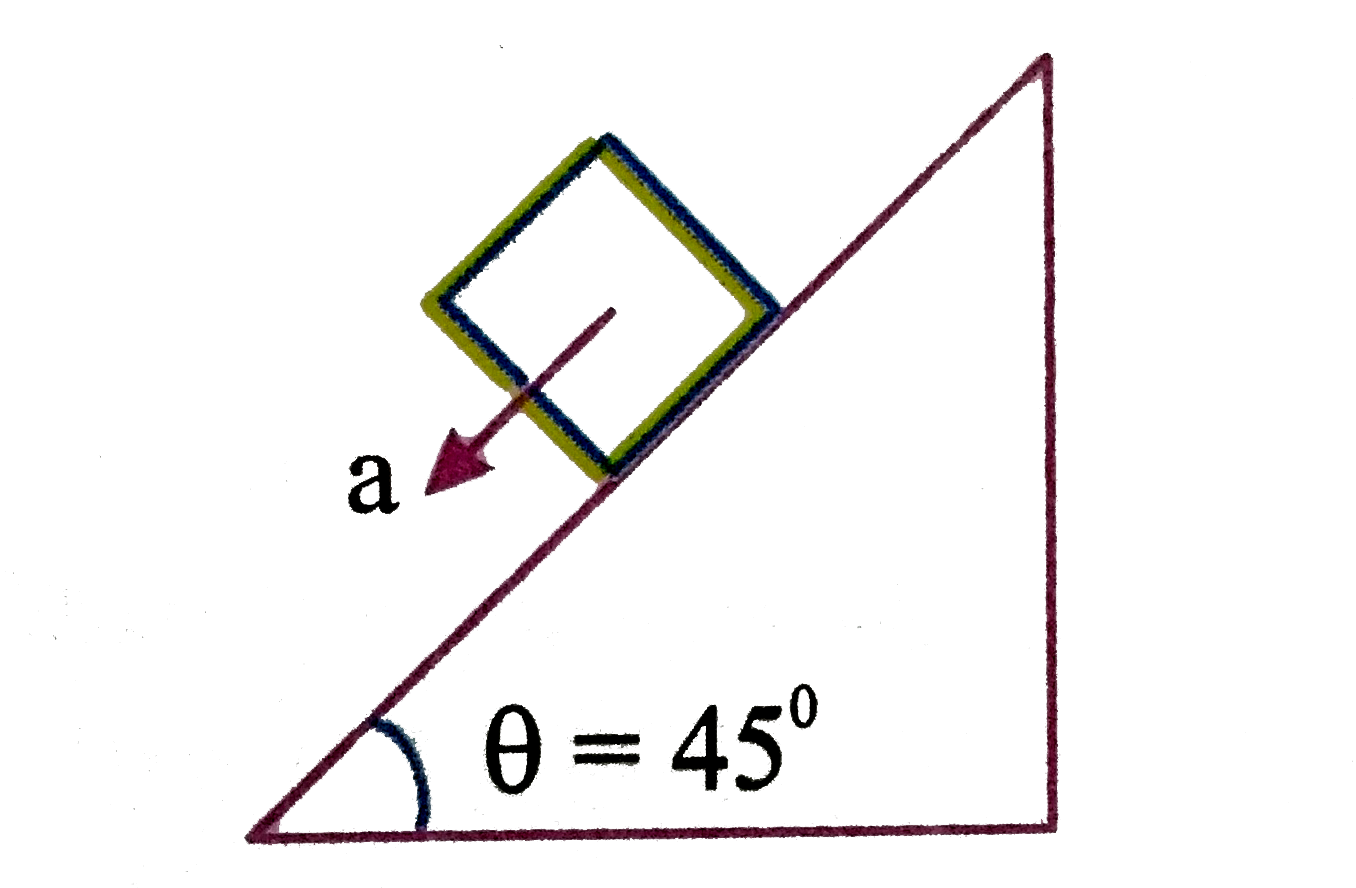Prove that the distances traversed during equal intervals of time by a body falling from rest, stand to one another in the same fatio as the odd mumbers beginning with unity [namely 1: 3: 5: …………….].
Here, u=0,a=g,<br>Distancetravel≤dInthsecondisgivenby<br>D_(n) =u +a/2 (2n -1)<br>Distancetravel≤d∈1st second<br>[i.e.whenn=1] will be
Distance travelled in 2th second
[i.e. when n=2]willbe<br>D_(2) 0+ g/2 92 xx1) =(3g)/2<br>Distancetravel≤d∈3thsecond<br>[i.e.whenn3 ] will be
D30+g2(2×5−1)=5g2
Distance travelled in 4th second
[i.e. when 4n ] will be
D4=0+g2(2×4−4−1)=7g2
∴D1:D2:D3:D41:3:5:7(Proved).
Topper's Solved these Questions
- BOOK - PRADEEPCHAPTER - KINEMATICSEXERCISE - 3 SolvedExamples46videos
KINEMATICS
- BOOK - PRADEEPCHAPTER - KINEMATICSEXERCISE - 4 SolvedExamples31videos
KINEMATICS
- BOOK - PRADEEPCHAPTER - KINEMATICSEXERCISE - 1 SolvedExamples17videos
KINEMATICS
- BOOK - PRADEEPCHAPTER - GRAVIATIONEXERCISE - Assertion-Reason Type Questions19videos
GRAVIATION
- BOOK - PRADEEPCHAPTER - LAWS OF MOTIONEXERCISE - Assertion- Reason Type Questions17videos
LAWS OF MOTION
Similar Questions
True/False type quesiton : The ratio of the distances covered by a body falling freely from rest in the first, second and third seconds of its fall is 1:3:5.
View SolutionA particle moves from rest in a straight line with alternate acceleration and retardation of mahnitudes f and f' during equal intervals of time t. At the end of 2n such intervals prove that the space it has described is
nt22[(2n+1)f−(2n−1)f']View Solution
Knowledge Check
- Question 1 - Select One
The ration of the distance traversed, in successive intervals of time by a body, falling from rest, are
A1 : 3 : 5 : 7 : 9 : …B2 : 4 : 6 : 8 : 10 : …C1 : 4 : 7 : 10 : 13 : …DNone of the above - Question 2 - Select One
The distance moved by a freely falling body (startibg from rest) during st,2nd,3nd,……nth second of its motion are propotional to .
AEven numbersBOdd numbersCAll integral numbersDSquares of integral numbere - Question 3 - Select One
A student measures that distance traversed in free fall of a body, initially at rest in given time. He uses this data to estimated g, the acceleration due to gravity. If the maximum percentage error in measurement of the distance and the time are e1 and e2, respectively, the percentage error in the estimation of g is
Ae2−e1Be1+2e2Ce1+e2De1−2e2
A body starts from rest, if the ration of the distance travelled by the body during the 4th and 3rd second is x5. Find the valud of x.
View SolutionA body falls from a large height. The ratio of distance traveled in each time interval t0 during t=0 to t=3t0 of the journey is
View SolutionWhen body slides down from rest along smooth inclined plane making angle of 45∘ with the horizontal, it takes time T When the same body slides down from rest along a rough inclined plane making the same angle and through the same distance it is seen to take time pT, where p is some number greater that 1. Calculate late the coefficient of friction beween the body and the rough plane.
 .View Solution
.View SolutionAssertion: The average speed of a body over a given interval of time is equal to the average velocity of the body in the same interval of time if a body moves in a straight line in one direction.
Reason: Because in this case distance travelled by a body is equal to the displacement of the body.View SolutionPASSAGE-I : A body is said to be in motion when its position changes continuously with respect to a stationary object taken as reference point. A body has a uniform motion if it travels equal distance in equal intervals of time, no matter how small these time intervals may be. The distance-time graph for uniform motion is a straight line. A body has a non-uniform motion if it travels unequal distance in equal intervals of time. The distance-time graph for a body having non-uniform motion is a curved line.
If a body travels 2 metres in 1st second, 3 metres in 2nd second and then, travels with a constant speed, the motion of the body isView Solution

